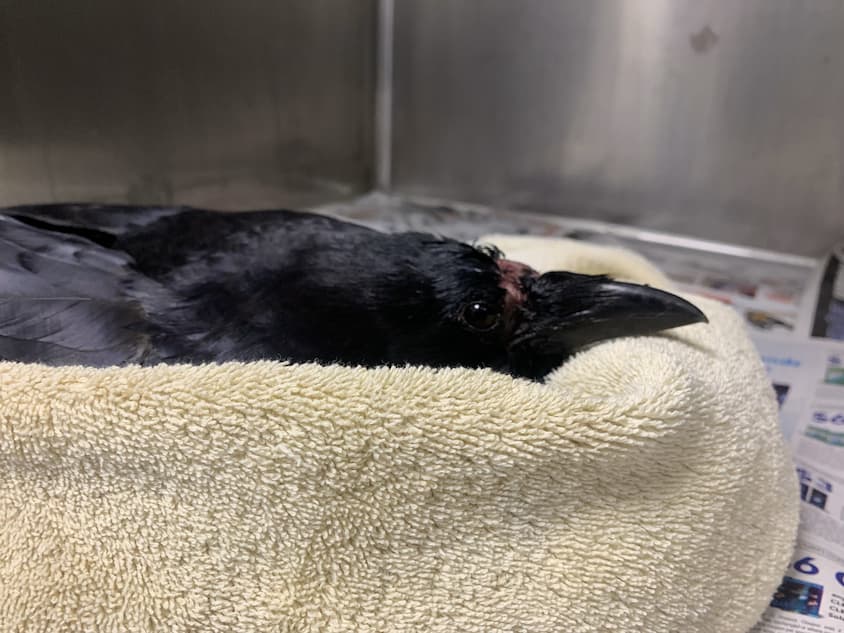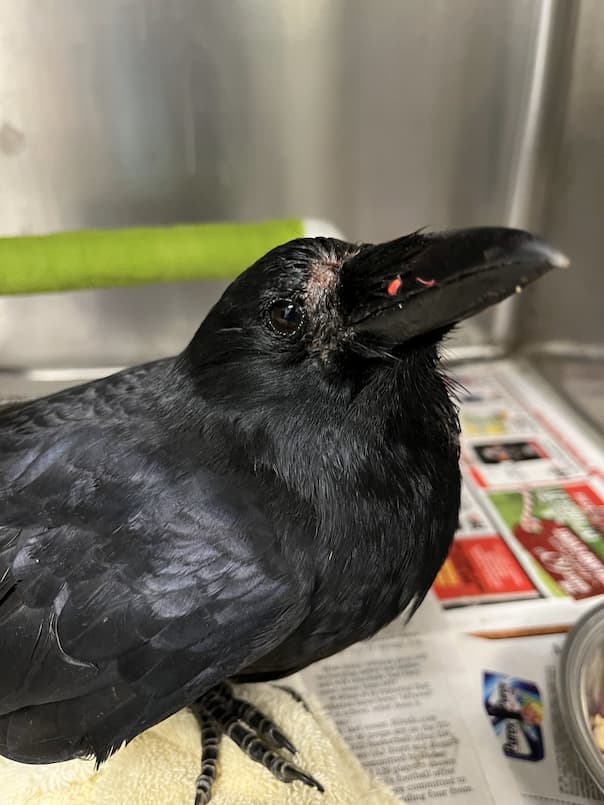American crow (Corvus brachyrhynchos), one of the most intelligent bird species in North America. They are very social birds and sleep in a communal roost together in the winter! They thrive by working collectively and using their intelligence to catch or steal prey and other food items. Yet, this unique species has faced the threat of West Nile Virus since 1999 when the outbreak began in New York City. According to the data, this disease has caused a 45% regional decline in crow populations.
West Nile Virus (WNV) is a vector-borne disease that is spread by mosquitoes. In a temperate climate, WNV is prevalent in late summer and early fall. It can infect a wide range of species, from birds to humans. Mosquitoes play a critical role in the transmission, as they are the vector. Meaning they are the intermediary. They get the virus from the blood of one host, for example an infected bird, and then when they bite another species like a human, they pass the disease through the bite. Transmission has also been documented from bird-to-bird. This usually occurs when a bird consumes another bird that is infected with WNV or when water tainted with feces and saliva from an infected bird is drank.
Over 250 bird species have been documented as WNV-positive cases. Within these species, the corvids (crow, raven, and jay) have the highest susceptibility to WNV in North America. Many studies have investigated this phenomenon and found correlations between human WNV cases, mosquito transmission pathways, and crow death from WNV. Rapid urbanization significantly impacted the speed of virus transmission in wildlife.

West Nile Virus in birds primarily attacks the central nervous system. Therefore, some of the symptoms an infected bird displays include a wide range of neurologic signs, such as a head tilt, lethargy, weakness, and loss of coordination. Many cases that come across the Wildlife Medical Clinic also show a great degree of emaciation, where patients are significantly underweight and are unable to fly. Once the crow is infected with the virus, it almost always indicates a grave prognosis. Studies have shown that most infected crows die within three weeks of contracting the virus. And testing for the disease will likely occur post-mortem through tissue samples from the heart, brain, and kidneys or via oral swabs.
The success rate of recovery is incredibly low in crows, since no known established treatments are available to clear the viral infection. Most cases rely on the animal to clear the virus and recover with supportive care. And the mortality rate can be as high as 100%. However, some breakthrough discoveries were made in 2022 by the Cornell College of Veterinary Medicine – where their wildlife experts successfully treated five infected crows with fluids, anti-inflammatory drugs, anti-fungal drugs, and anti-parasitic drugs. This treatment successfully allowed these wildlife experts to release the five American crows that were previously ill with WNV. The discovery was linked to potential immune system adaptation in the crow or the shifting of the virus’s behavior. While this treatment was successful, cases in general still pose a grave prognosis for crows and research continues in order to better understand this disease dynamic. We are hopeful that a treatment will become available in the future that will help our Crow friends fight off this deadly virus.
Written by YiYing, Class of 2026
References
Wheeler, S.S., Taff, C.C., Reisen, W.K. et al. Mosquito blood-feeding patterns and nesting behavior of American crows, an amplifying host of West Nile virus. Parasites Vectors 14, 331 (2021). https://doi.org/10.1186/s13071-021-04827-x
Yaremych SA, Warner RE, Mankin PC, Brawn JD, Raim A, Novak R. West Nile virus and high death rate in American crows. Emerg Infect Dis. 2004 ;10(4):709-11. doi: 10.3201/eid1004.030499. PMID: 15200865; PMCID: PMC3323091.
Johns Hopkins Medicine. West Nile virus (n.d.). https://www.hopkinsmedicine.org/health/conditions-and-diseases/west-nile-virus
Wildlife Futures Team. West Nile Virus. PennVet – Wildlife Futures Program. (2021). https://www.vet.upenn.edu/research/centers-laboratories/research-initiatives/wildlife-futures-program/our-research/fact-sheet-detail/west-nile-virus#:~:text=Birds%20with%20West%20Nile%20virus,will%20die%20within%203%20weeks.
Cordova, M.G., Cornell documents first crows to survive deadly West Nile virus. Cornell Chronicle. (2022). https://news.cornell.edu/stories/2022/06/cornell-documents-first-crows-survive-deadly-west-nile-virus


